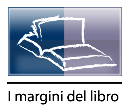 |
15, 2021 | |||
| Abstracts | versione italiana | |
| Saggio |
Alfonso Casella
Tabucchi, Sereni e Maria do Carmo. Genesi letteraria di un equivoco editoriale
After his debut novel published in 1975 (Piazza d'Italia, Bompiani), Tabucchi wrote Il piccolo naviglio (Mondadori, 1978) and Lettere a capitano Nemo which was released after the author's death. With the recent discovery of Tabucchi's unedited letters complaining about the delays in its publication, today we can retrace retrospectively the involuntary genesis of his first collection of tails: Il gioco del rovescio, Il Saggiatore 1981 (Letters from Casablanca), the book which fascinated many European readers and influenced the future career of Antonio Tabucchi.
versione italiana |
| Saggio |
Muriel Maria Stella Barbero
Ut pictura poesis: il margine figurativo del sonetto della Sistina di Michelangelo
The drawing bordering the autograph transcription of the sonnet I'ho gią fatto un gozzo in questo stento by Michelangelo Buonarroti is the most interesting and relevant example of collaboration between word and image within the work of the artist. Engaging in a close comparison of the sketch and the nearby poetry, the present paper attempts to interpret the sheet in light of the theoretical idea of the ut pictura poesis, as it is presented by Fifteenth-century art theory and in particular by the very character of Michelangelo in Francisco de Hollanda's Diįlogos em Roma.
| versione italiana |
| Saggio |
Filippo Pecorari
Le forme linguistiche della dialogicitą nei testi di dedica, dal Cinquecento a oggi
The aim of the paper is to reflect on the presence of allocutives and vocatives in dedication texts from a historical-linguistic perspective. The analysis relies on a corpus of 100 dedications written from the 16th century to the present day. The forms analyzed are signals of the dialogical character of the text, as they attest the existence of a ratified participant in the interaction. In this respect, dedication as a genre reveals a clear evolutionary path: up to the early 19th century, the almost exclusive use of the model of the epistle implies a high level of dialogicity, which increases particularly in the opening and closing of the letter; from the 19th century onwards, the success of new forms of dedication (epigraphic, nominal, included) progressively leads the genre out of the field of dialogicity.
versione italiana |
